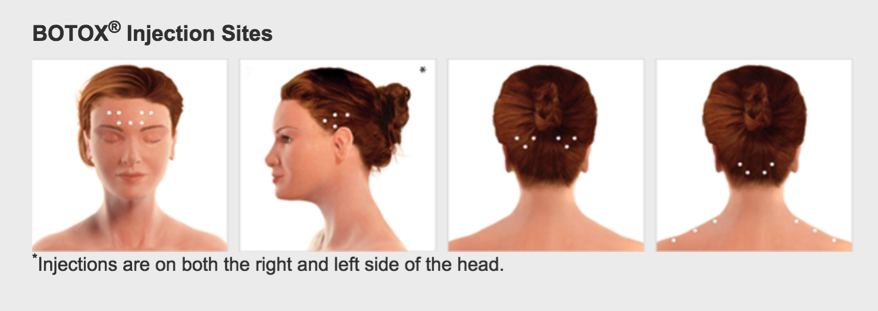
At the Center for Pain Relief, we treat patients with compassion and respect as we help them manage their pain. Located at the Medical Office Building at Pine Creek Medical Center in Dallas, our center primarily focuses on interventional pain management but also incorporates medical pain management.
[/vc_cta]
Botulinum Toxin Type A Injections
Botulinum Toxin Type a (Botox), is a chemical from an organism that causes botulism. Botulism can be a fatal disorder that causes paralysis of the muscles. The medical toxin being used however is several thousand times diluted and will not cause this generalized type of reaction and is therefore safe. The toxin relaxes the muscle by preventing the release of a substance called Acetylcholine from the nerve endings. It is this substance that causes the muscles to contract or remain taut, thus without acetylcholine, the muscles cannot tighten up.
Botulinum Toxin A injection is indicated when the effects of trigger point injections are short lived. The effects of the “Botox” on the injected muscles are expected to last several months to as long as six months. The procedure is similar to trigger point injections.
About Botulinum Toxin Type A Injections
Botox (or Onabotulinum toxin A/ botulinum toxin type A) is dubbed the “miracle poison” and is derived from the same bacteria that causes botulism. A neurotoxin, botulinum toxin A blocks nerve activity in the muscles resulting in a temporary reduction in muscle activity and nerve response. Using Botox has rapidly gone from a cosmetic medicine to lessen the appearance of facial wrinkles to a serious option for relieving migraine headaches and chronic pain.
Concerns about where this treatment stems from are understandable, but note that the FDA has provided full approval for the product to be used to treat chronic migraines. Botox injections can also be used to relieve muscle spasticity. Important to note: Botox is a non-poisonous toxin.
Risks of Botox Injections
With any medical procedure, adverse reactions may occur. Side effects of Botox injections are typically temporary and not serious.
Potential side effects may include:
- muscle weakness near treatment site
- bruising, redness and/or swelling near treatment site
- headache
- muscle stiffness
- fever
- dizziness and/or drowsiness
Are Botox Injections Safe?
Botox for cosmetic use is considered very safe when performed by a licensed, board-certified dermatologist or plastic surgeon. In fact, one review of 6,200 injections performed by licensed dermatologists in 2011 found only two cases with negative side effects (bruising and eyelid drooping).
Botox for pain relief is a newer venture, but is widely used to neutralize the nerves that send migraine pain signals. It is also used to treat muscle spasticity. Additionally, Botox injections for pain management in general have been successful, minimally invasive treatment options as opposed to more advanced surgeries that pose greater risks.
Is it painful to get Botox injections?
You won’t find many people who like needles, but the ones used for Botox injections are very small so any temporary pain involved is minimal. A doctor may choose to numb the area where the injections will be given before the treatment with a topical anesthetic cream or ice/cold pack.
How much Botox is necessary for pain relief injections?
A typical dose of Botox for migraine treatment is 155 units. Keep in mind that more than one area may get Botox injections in one sitting, so unit quantity is relative to your personal visit.



